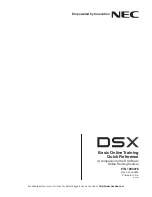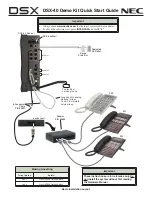
– 5-14 –
■
Memory LDO (VMEM)
The memory LDO supplies the system memory as well as the subsystems of the baseband processor including
memory IO, display, and melody interfaces. It is capable of delivering up to 150 mA of current and is available for
either 1.8 V or 3 V based systems. The LDO has also been optimized for low quiescent current and will power up
at the same time as the core LDO.
■
External InterfaceLDO (VEXT)
This LDO has the same features as the core LDO. It has furthermore been optimized for good low frequency ripple rejection for
use with the baseband converter sections in order to reject the ripple coming from the RF power amplifier. VEXT is rated to
170 mA, which is sufficient to supply the analog section of the baseband converter such as the AD6537, as well as the speaker.
■
TCXO LDO (VTCXO)
The TCXO LDO is intended as a supply for a temperature compensated crystal oscillator, which needs its own ultra-low noise
supply. VTCXO is rated for 20 mA of output current and is turned on along with the analog LDO when TCXOEN is asserted.
■
RTC LDO (VRTC)
The RTC LDO is capable of charging rechargeable Lithium or capacitor-type backup coin cells to run the real-time clock module.
The RTC LDO supplies current both for charging the coin cell and for the RTC module. In addition it features a very low
quiescent current since this LDO is running all the time, even when the handset is switched off. It also has reverse current
protection with low leakage, which is needed when the main battery is removed and the coin cell supplies the RTC module.
■
Microphone LDO (VMIC)
The Microphone LDO generates the voltage needed for 2.5V Microphone. It is rated for 1 mA of supply current.
The Microphone regulator supplies the microphone interface circuitry.
The Microphone regulator is optimized for extremely high rejection up to 217 Hz and low noise.
■
SIM LDO (VSIM)
The SIM LDO generates the voltage needed for 1.8 V or 3 V SIMs. It is rated for 20 mA of supply current and can be controlled
completely independently of the other LDOs.
Applying a low to SIMEN shuts down the SIM LDO. A discharge circuit is active when SIMEN is low.
This pulls the SIM LDO's output down when the LDO is disabled. SIMVSEL allows the SIM LDO to be programmed for either
1.8 V or 2.8V. Asserting a high on SIMVSEL sets the output for 2.8 V.
SIMEN and SIMVSEL allow the baseband processor to properly sequence the SIM supply when determining which type of SIM
module is present.
















































